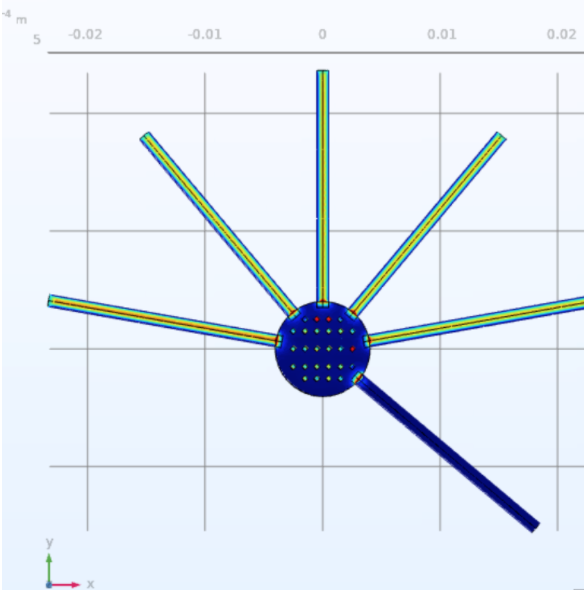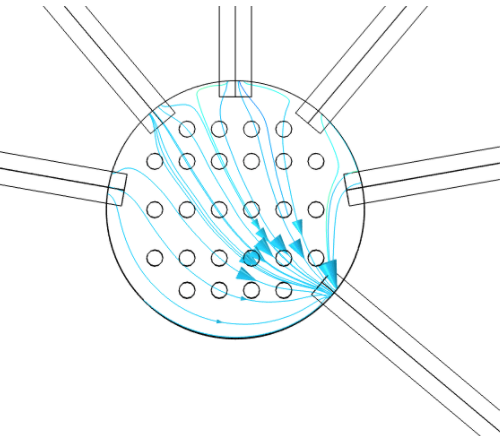
Figure 1

Team 1
Team Members |
Faculty Advisor |
Nora Khalil |
Dr. Mu-Ping Nieh Sponsor UConn School of Engineering |
sponsored by
Sponsor Image Not Available
In the United States, an estimated 1.8 million people were diagnosed with cancer while approximately 605,000 people died from cancer in 2019. Although the death rate from cancer has declined in the last few decades, drug therapy research is still necessary for improving cancer treatments. There are currently several drugs available to the general population for treating cancer. However, each of these drugs responds differently to various people and types of cancer. One method of developing specialized drug therapies is by modeling nanoparticle diffusion on a microfluidic device known as a tumor-on-a-chip model. In this model, nanoparticles act as drug carriers and the microfluidic device simulates tumors and their extracellular matrix environment. In our simulation, we created five inlet streams into a tumor environment to study the effect of parameters such as flow rate, concentration, and species of nanoparticles at each injection site; this will allow us to predict how each of these drug species would interact with each other in the body to influence nanoparticle uptake in tumors. Then we compared our predictions to experimental values of nanoparticle diffusion on a tumor on a chip. Using this model, we can make specialized drug treatments that maximize the effect of each individual drug in targeting tumor cells to improve future cancer therapies.
